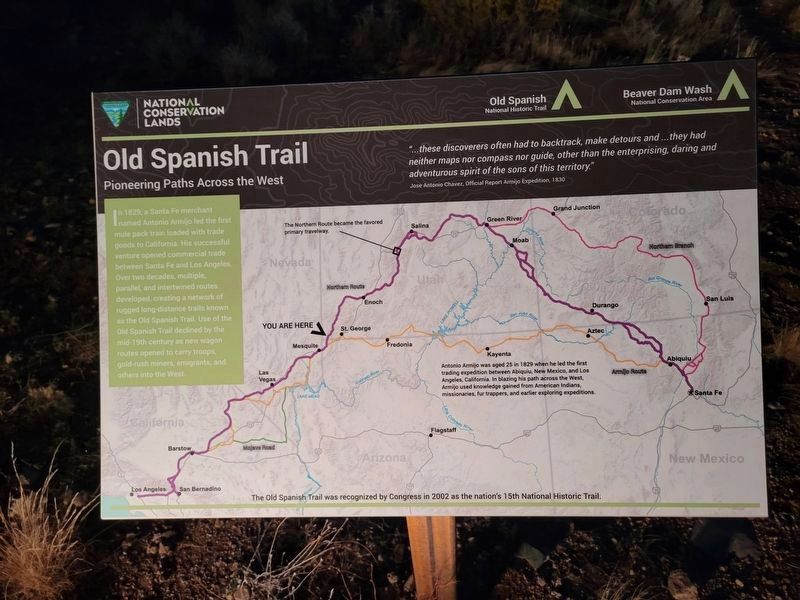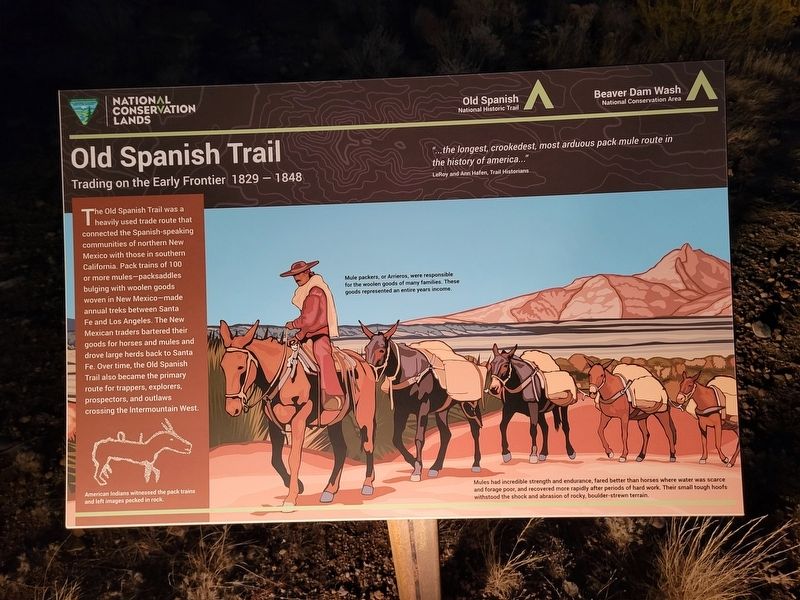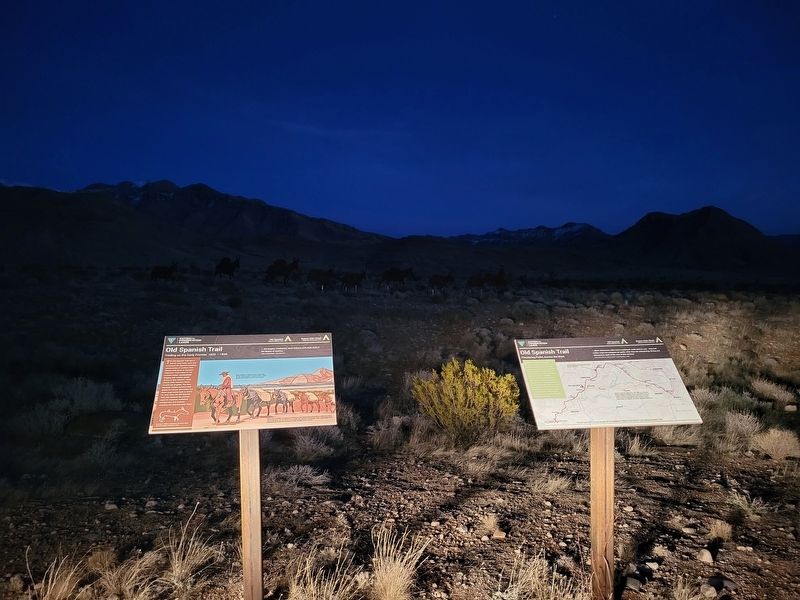Littlefield in Washington County, Utah — The American Mountains (Southwest)
Trading on the Early Frontier 1829-1848
— Old Spanish Trail —
The Old Spanish Trail was a heavily used trade route that connected the Spanish-speaking communities of northern New Mexico with those in southern California. Pack trains of 100 or more mules - packsaddles bulging with woolen goods woven in New Mexico - made annual treks between Santa Fe and Los Angeles. The New Mexican traders bartered their goods for horses and mules and drove large herds back to Santa Fe. Over time, the Old Spanish Trail also became the primary route for trappers, explorers, prospectors, and outlaws crossing the Intermountain West.
American Indians witnessed the pack trains and left images pecked in rock
"...the longest, crookedest, most arduous pack mule route in the history of america..."
LeRoy and Ann Hafen, Trail Historians
Mule packers, or Arrieros, were responsible for the woolen goods of many families. These goods represented an entire years income.
Mules had incredible strength and endurance, fared better than horses where water was scarce and forage poor, and recovered more rapidly after periods of hard work. Their small tough hoofs withstood the shock and abrasion of rocky, boulder strewn terrain.
Topics and series. This historical marker is listed in these topic lists: Industry & Commerce • Roads & Vehicles. In addition, it is included in the Old Spanish National Trail series list. A significant historical year for this entry is 1829.
Location. 37° 2.59′ N, 113° 53.951′ W. Marker is in Littlefield, Utah, in Washington County. Marker is on West Old Highway 91, on the right when traveling north. Touch for map. Marker is at or near this postal address: W Old Hwy 91, Littlefield AZ 86432, United States of America. Touch for directions.
Other nearby markers. At least 1 other marker is within 11 miles of this marker, measured as the crow flies. The Old Spanish Trail (approx. 10.2 miles away in Arizona).

Photographed By Jeremy Snow, February 13, 2024
2. Old Spanish Trail Marker
Pioneering Paths Across the West
In 1829 a Santa Fe merchant named Antonia Armijo led the first mule pack train loaded with trade goods to California. HIs successful venture openend commercial trade between Santa Fe and Los Angeles. Over two decades, multiple parallel, and intertwined routes developed, creating a network of rugged long-distance trails known as the Old Spanish Trail declined by the mid-19th century as new wagon routes opened to carry troops, gold-rush miners, emigrants, and others into the West.
Antonio Armijo was aged 25 when he led the first trading expedition between Abiquiu, New Mexico and Los Angeles, California. In blazing his path across the West, Armijo used knowledge gained from American Indians, missionaries, fur trappers, and early exploring expeditions.
Credits. This page was last revised on March 11, 2024. It was originally submitted on February 19, 2024, by Jeremy Snow of Cedar City, Utah. This page has been viewed 33 times since then. Photos: 1, 2, 3. submitted on February 19, 2024, by Jeremy Snow of Cedar City, Utah. • Bill Pfingsten was the editor who published this page.

